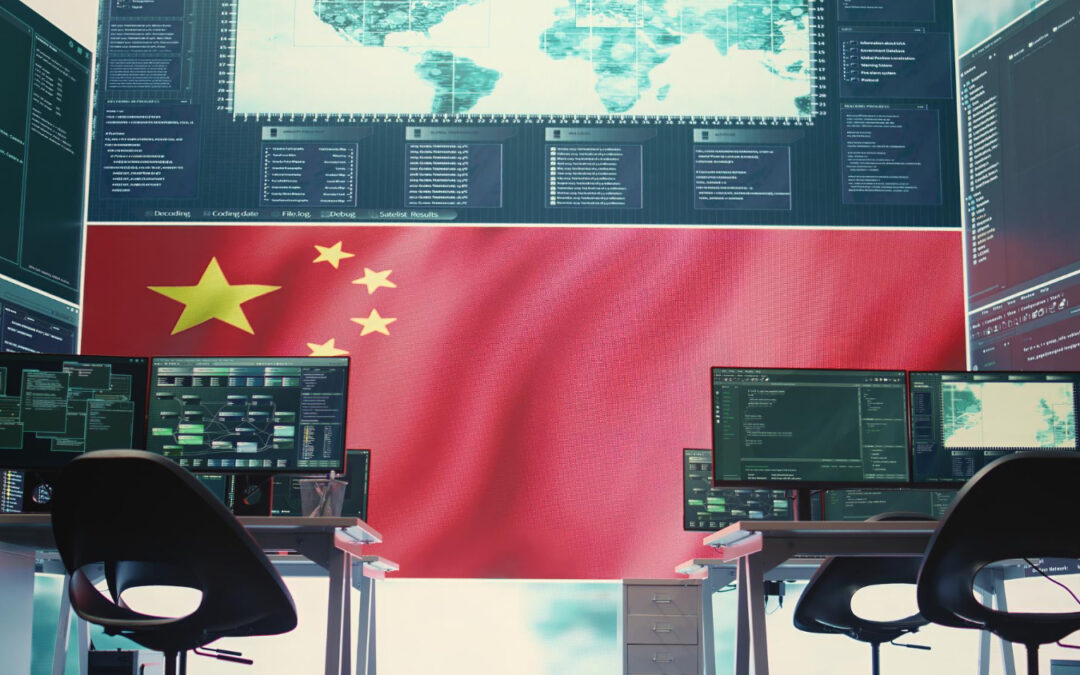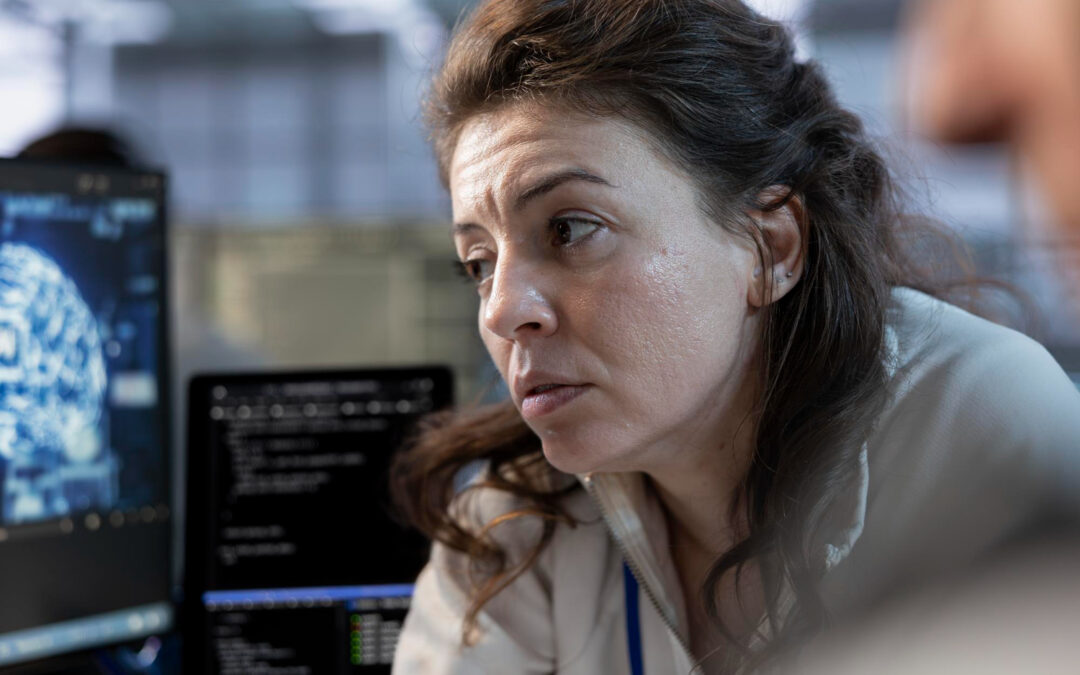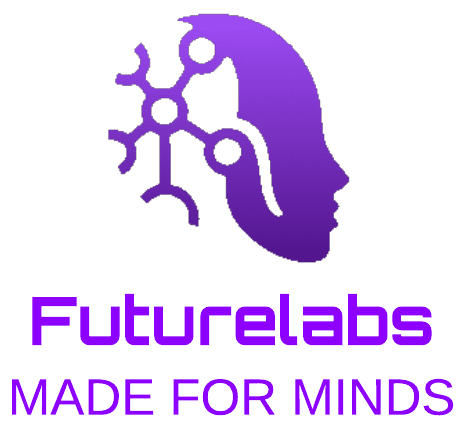
by DR. Ricardo Petrissans | Aug 17, 2025 | Biotechnology, News
Introduction:
Unity Biotechnology, founded in 2011 by a consortium of leading scientists in the study of aging, including Dr. Judith Campisi, has positioned itself as a pioneering company in the development of senolytic therapies—drugs designed to eliminate senescent cells, a type of dysfunctional cell that accumulates with age and contributes to chronic diseases.
With a focus on conditions such as osteoarthritis, degenerative eye diseases, and chronic pulmonary disorders, Unity seeks to redefine the treatment of age-related diseases. This article examines its scientific foundations, drug portfolio, clinical challenges, and potential impact on geriatric medicine and longevity.
Scientific Foundations: Cellular Senescence and Senolytics
a) The Senescent Cell Hypothesis:
Senescent cells are cells that have stopped dividing due to DNA damage, oxidative stress, or mitochondrial dysfunction. Although they initially serve a protective function (preventing the proliferation of damaged cells), their chronic accumulation triggers the senescence-associated secretory phenotype (SASP), releasing pro-inflammatory cytokines, chemokines, and proteolytic enzymes that promote local inflammation, tissue dysfunction, and systemic aging.
b) Mechanisms of Senolytics:
Senolytics are compounds that selectively induce apoptosis in senescent cells. Unity Biotechnology focuses on inhibiting specific survival pathways in these cells, such as the Bcl-2 and Bcl-xL proteins, which allow them to evade programmed cell death.
Clinical Pipeline: From Theory to Practice
Unity has developed a diversified portfolio, prioritizing diseases with a high medical burden and a clear link to senescence:
a) UBX0101: Osteoarthritis
Mechanism: Inhibitor of the MDM2/p53 protein, which induces apoptosis in senescent chondrocytes within joints.
Clinical Results:
Phase 1 (2019): Demonstrated safety in 48 patients, with a reduction in knee pain.
Phase 2 (2020): Showed no significant efficacy compared to placebo, leading to program discontinuation.
Lessons: The heterogeneity of osteoarthritis and the lack of precise senescence biomarkers complicated patient selection.
b) UBX1325: Ophthalmologic Diseases
Mechanism: Bcl-xL inhibitor administered via intravitreal injection.
Applications:
Diabetic Macular Edema (DME): In Phase 2, it showed sustained reduction of edema in 60% of patients at 24 weeks (2023).
Age-Related Macular Degeneration (AMD): Preclinical studies highlight its potential to reduce pathological angiogenesis.
Advantage: Local administration minimizes systemic effects, a key challenge for oral senolytics.
c) UBX1967: Neurodegenerative and Pulmonary Diseases
Mechanism: Bcl-2 inhibitor with greater penetration into brain and lung tissues.
Status: Preclinical, focusing on Alzheimer’s disease and idiopathic pulmonary fibrosis (IPF).
Clinical and Regulatory Challenges
a) Selectivity and Toxicity
Bcl-2 and Bcl-xL proteins are critical for the survival of healthy cells (e.g., platelets). UBX1325 avoids hematologic toxicity through local administration, but systemic toxicity remains an obstacle.
b) Senescence Biomarkers
The lack of standardized biomarkers makes it difficult to identify patients with a high burden of senescent cells. Unity collaborates with institutes such as the Buck Institute to develop panels based on non-coding RNA and SASP profiles.
c) Regulation and Approval
The FDA (Food and Drug Administration) has not yet established a specific framework for senolytic therapies. Unity advocates for endpoints based on functional improvements (e.g., mobility in osteoarthritis) rather than intermediate biomarkers.
Impact on the Longevity Field:
Unity has catalyzed advances beyond its own pipeline:
a) Validation of the Senolytic Approach:
Its preclinical studies in murine models demonstrated that eliminating senescent cells improves cardiac, renal, and cognitive function, inspiring companies such as Cleara Biotech and Oisín Biotechnologies to explore alternative mechanisms.
b) Strategic Collaborations:
Academia: Partnerships with the Mayo Clinic and the University of California to study senescence in deep tissues.
Industry: Collaboration with AbbVie (2022) to develop senolytics for pulmonary diseases, combining Unity’s platform with AbbVie’s expertise in inhaled delivery.
Future Perspectives and Opportunities:
a) Combination Therapies
Senescence interacts with pathways such as mTOR and NAD+ metabolism. Unity is exploring the combination of UBX1325 with mTOR inhibitors (e.g., rapamycin) to enhance anti-aging effects.
b) Expansion to New Indications
Oncology: Chemotherapy-induced senescent cells promote recurrence. Senolytics could reduce this risk.
Hepatic Fibrosis: Studies in animal models show a reduction of pathological collagen after treatment with UBX1967.
c) Delivery Technologies:
Unity is investigating lipid nanoparticles to target senolytics to specific organs (e.g., brain), avoiding off-target effects.
Conclusions: Between Skepticism and Revolution:
Unity Biotechnology embodies both the promise and the challenges of translating aging biology into clinical practice. Although the failure of UBX0101 revealed methodological hurdles, the preliminary success of UBX1325 in ophthalmology suggests that certain tissues are more accessible to senolytic interventions. Its work has redefined aging as a modifiable process, attracting investment and attention to a once-marginal field.
However, critical questions remain: Can senolytics offer lasting benefits without cumulative adverse effects? How will their success be measured in trials of multifactorial diseases such as Alzheimer’s? The answers will depend on advances in biomarkers, delivery technologies, and adaptive trial designs.
In the words of Dr. Campisi: “Senescence is a double-edged sword: it protects us from cancer, but condemns us to aging. Mastering this balance is the next great medical challenge.” Unity is not merely pursuing drugs, but a paradigm shift: treating aging not as destiny, but as a treatable condition.
Investment and Strategic Vision: Peter Thiel’s Role:
Peter Thiel, co-founder of PayPal and Palantir, and one of Silicon Valley’s most influential entrepreneurs, has been a key player in the longevity and biotechnology startup ecosystem. His involvement in Unity Biotechnology reflects not only a financial interest but also a philosophical bet on technologies aiming to redesign the limits of human health.
a) Founders Fund and Investment in Unity Biotechnology:
Through his venture capital firm, Founders Fund, Thiel has invested in companies that challenge established paradigms, from SpaceX to artificial intelligence ventures. In 2016, Founders Fund led Unity Biotechnology’s Series B funding round, contributing $116 million out of a total of $151 million.
This capital injection allowed Unity to accelerate its preclinical programs and move toward clinical trials in osteoarthritis and ocular diseases.
Thiel’s Vision: In his book Zero to One, Thiel argues that radical innovations (those that create new markets) are more valuable than incremental ones. Unity fits this vision by tackling aging — an underexplored field with disruptive potential.
b) Thiel and the Political Economy of Longevity:
Thiel has publicly expressed skepticism toward traditional medicine’s reactive approach to treating diseases. Instead, he advocates for preventive medicine that targets the root causes of aging. In a 2017 interview with Bloomberg, he stated: “Modern medicine is like fixing a car only when it breaks down. We need mechanisms to keep it running indefinitely.”
For Thiel, Unity Biotechnology represents a vehicle to materialize this philosophy. Its focus on eliminating senescent cells — rather than merely treating symptoms — aligns with the idea of proactive interventions that delay or reverse degenerative processes.
c) Influence Beyond Capital:
In addition to financing, Thiel has contributed to Unity through:
Credibility and Networks: His endorsement attracted other high-profile investors such as Jeff Bezos (via Bezos Expeditions) and Singapore’s Sovereign Wealth Fund (GIC).
Business Strategy: Thiel has emphasized the importance of scaling technologies efficiently. Under his influence, Unity prioritized indications with clear regulatory pathways (e.g., ophthalmologic diseases) before tackling complex conditions such as Alzheimer’s.
A Broader Context: Thiel and Longevity Investment:
Thiel’s participation in Unity is not an isolated case but part of a broader portfolio of investments in anti-aging biotechnologies:
Halcyon Molecular: A company co-founded by Thiel in 2008 that sought to apply molecular biology to extend lifespan (it closed in 2012 but set important precedents).
Paradigm Shift with Calico: In 2013, Thiel publicly criticized Google (now Alphabet) for creating Calico, a longevity subsidiary, arguing that large tech companies lack the agility required to innovate in biotechnology. His support for Unity can be seen as an agile alternative to traditional corporate models.
Other Investments: Thiel has backed companies such as BioAge Labs (aging biomarkers) and Samumed (tissue regeneration), consolidating an ecosystem of startups that both compete with and complement Unity.
Controversies and Criticisms:
The relationship between Thiel and Unity is not without debate:
Scientific Skepticism: Some researchers, such as biologist Leonard Hayflick, question whether the elimination of senescent cells is safe in the long term, given their role in tumor suppression. Thiel, known for his high tolerance for risk, may be underestimating these challenges.
Ethics of Longevity: Critics like philosopher John Harris argue that focusing on extending the lives of economic elites (through costly therapies) could exacerbate inequality. Unity, with treatments initially aimed at Western markets, faces this dilemma.
Expanded Conclusion: Thiel, Unity, and the Future of Medicine:
The alliance between Peter Thiel and Unity Biotechnology symbolizes the convergence of bold venture capital and cutting-edge science. While Thiel brings resources and an iconoclastic vision, Unity provides a pathway to turn the biology of aging into tangible interventions.
However, the success of this collaboration will depend on overcoming not only technical but also ethical and regulatory barriers. If Unity succeeds in commercializing an effective senolytic, it could validate Thiel’s model and spark a new wave of longevity investments. If it fails, it will reinforce skepticism toward radical approaches in medicine.
In the words of Nir Barzilai, director of the Institute for Aging Research at Albert Einstein College: “Thiel has brought much-needed attention to the science of aging. Now, Unity must prove that it’s not just a bet, but a revolution.”

by DR. Ricardo Petrissans | Aug 11, 2025 | News, The protagonists of IA
Childhood and Education: The Foundations of a Visionary:
Born in 1985 in Zhanjiang, Guangdong Province, Liang Wenfeng grew up in a coastal region that blended tradition and modernity—an environment that nurtured his curiosity for technology.
The son of a primary school teacher, his education was marked by a strong emphasis on problem-solving and the exact sciences. From an early age, he displayed exceptional talent in mathematics and programming, skills he honed at Zhejiang University, where he earned a bachelor’s degree in Electronic Information Engineering (obtained in 2007) and a master’s degree in Information and Communication Engineering (graduated in 2010). His master’s thesis, focused on target-tracking algorithms using low-cost cameras, revealed his early interest in automation and artificial intelligence.
From Quantitative Finance to the AI Revolution:
After graduating, Liang moved to Chengdu, where he explored practical applications of AI in various sectors, facing initial failures that led him to focus on finance. In 2013, he co-founded Hangzhou Yakebi Investment Management, integrating AI into quantitative trading strategies. This project laid the groundwork for his next milestone: in 2016, together with two university classmates, he launched Ningbo High-Flyer, a hedge fund that managed over 100 billion yuan (equivalent to 13.79 billion USD) by 2021, using mathematical algorithms and machine learning for investment decisions.
His disruptive approach—eliminating human intervention in financial operations—established him as a pioneer in merging technology and finance. In 2019, during his speech at the Golden Bull Awards, he asserted that the future of investment depended on quantitative models driven by Artificial Intelligence.
DeepSeek: The Bet on Artificial General Intelligence
In 2023, Liang made a bold leap by founding DeepSeek, a startup dedicated to developing Artificial General Intelligence (AGI)—considered the “holy grail” of Artificial Intelligence. His strategy was unique: he secured 10,000 Nvidia A100 GPUs purchased before U.S. restrictions on China, ensuring a technological edge.
With a modest budget—reportedly $5.6 million—and a team of fewer than 10 people, prioritizing young talent over experience, he developed models such as DeepSeek-R1 (671 billion parameters) and DeepSeek-V3, which rival GPT-4 and Claude 3.
The success was immediate: in January 2025, his application surpassed ChatGPT as the #1 app in the U.S. App Store, triggering a $1 trillion drop in U.S. stock markets and drawing the attention of figures such as Donald Trump.
Philosophy and Global Impact
Liang operates under a “long-term” philosophy: he views basic research as an end in itself, beyond immediate profit. For him, the essence of human intelligence lies in language, and he believes that language models are the key to Artificial General Intelligence. Furthermore, he promotes open-source principles, releasing his models to democratize access to AI—a decision that contrasts with OpenAI’s closed approach.
In 2025, his influence reached political spheres: he participated in a symposium with Chinese Premier Li Qiang, where he advocated for the creation of a native technological ecosystem, criticizing China’s dependence on imitation rather than original innovation.
Personal Life and Legacy
Liang maintains a low profile: married to Zhang Mei and father of two children, he avoids social media and interviews, granting only two between 2023 and 2024. His fortune, estimated at $3.2 billion, comes from High-Flyer and DeepSeek, though he allocates significant resources to research.
Challenges and Controversies
Response to Technological Sanctions: DeepSeek demonstrated that U.S. restrictions on chip exports do not hinder Chinese innovation, having optimized limited resources.
Disruption in Global Competition: His success sparked debates in Silicon Valley about the sustainability of U.S. leadership in AI.
Reception of Internal Criticism: Some early partners underestimated him, dismissing him as a “nerd with a weird haircut” lacking clear vision—a stereotype he disproved through results.
Conclusion: A New Technological Paradigm
Liang Wenfeng embodies China’s transformation from follower to innovator in Artificial Intelligence. His trajectory—from financial algorithms to Generative AI models—redefines what is possible with limited resources and bold vision. As he himself states: “Chinese AI cannot remain an imitation; it must create its own path.”
In a world where technology has become a geopolitical battleground, DeepSeek is not merely a company—it is a symbol of Eastern resilience and ingenuity (from the Chinese perspective).

by DR. Ricardo Petrissans | Aug 8, 2025 | Introduction to the Evolution of AI, News
Titans of Artificial Intelligence: A Journey from Visionaries to the Architects of the Future
The history of artificial intelligence is a tapestry woven by brilliant minds who, over the decades, have challenged the limits of what is possible. From theorists who imagined thinking machines to engineers who made them a reality, each figure contributed an essential piece to this technological puzzle. This narrative not only celebrates their achievements but also explores how their ideas transformed our relationship with the machine.
The Foundational Dreamers:
At the dawn of the 20th century, when computers were still a mathematical abstraction, Alan Turing emerged as the prophet of the digital age. His concept of the Universal Machine, described in 1936, laid the theoretical foundations of computation. But it was in 1950, with his essay “Can Machines Think?”, that he posed the ultimate challenge: the Turing Test, a criterion for measuring a machine’s intelligence. Although he died before seeing his dream realized, his legacy inspired a generation of pioneers.
Among them stood out John McCarthy, who in 1956 organized the historic Dartmouth Conference, the birth certificate of AI as a discipline. McCarthy not only coined the term artificial intelligence, but also created Lisp, the first programming language designed to emulate human reasoning. Alongside him, Marvin Minsky, co-founder of the MIT AI Lab, explored how to endow machines with common sense, while Herbert Simon and Allen Newell developed the Logic Theorist, the first program capable of proving mathematical theorems.
The Survivors of the Winter:
The 1970s and 1980s brought disillusionment. The promises of human-level AI crashed against the limitations of computational power and data scarcity. However, in the darkness shone figures like Geoffrey Hinton, a stubborn Briton who, since the 1980s, defended artificial neural networks—inspired by the human brain—against widespread skepticism. Alongside Yann LeCun, father of convolutional networks (key for image recognition), and Yoshua Bengio, guru of unsupervised learning, Hinton formed the triumvirate of deep learning. Their perseverance laid the foundations for today’s revolution.
The Revolutionaries of the 21st Century:
The new millennium saw the emergence of a generation that turned AI into a global force. Fei-Fei Li, a Chinese-American researcher, democratized access to deep learning by creating ImageNet in 2009: a database of millions of labeled images that enabled neural networks to be trained with unprecedented precision. Meanwhile, Demis Hassabis, neuroscientist and chess champion, founded DeepMind in 2010—a company that merged Artificial Intelligence and neuroscience to achieve milestones such as AlphaGo (2016), the first program to defeat a human Go champion, and AlphaFold (2020), which solved the mystery of protein folding.
In Silicon Valley, Andrew Ng propelled machine learning to an industrial scale. As co-founder of Google Brain, he demonstrated that neural networks could learn from massive datasets, while his massive open online courses (MOOCs) taught AI to millions. At the same time, Jensen Huang, CEO of NVIDIA, transformed graphics cards (GPUs) into the physical engine of modern Artificial Intelligence, enabling calculations that once required supercomputers.
The Architects of the Generative Era:
The last decade belongs to the creators of generative AI. Ian Goodfellow, with his invention of Generative Adversarial Networks (GANs) in 2014, opened the door to machines capable of creating realistic images, music, and text. But it was Ilya Sutskever, co-founder of OpenAI, who pushed this idea to its limits. As a key architect of GPT-3 and GPT-4, his language models transformed AI from a tool into a creative collaborator. Alongside him, Sam Altman, visionary CEO of OpenAI, turned ChatGPT into a global phenomenon, sparking debates about the future of work and education.
In digital art, Dario Amodei and his team at Anthropic developed Claude, an ethical rival to ChatGPT designed to minimize bias, while Emad Mostaque, founder of Stability AI, popularized open-source innovation with Stable Diffusion, allowing anyone to generate images using Artificial Intelligence.
The Guardians of Ethics:
As Artificial Intelligence advances, a new generation ensures we don’t lose our way. Timnit Gebru, former Google researcher, exposed the risks of gigantic language models, warning about their carbon footprint and racial biases. Joy Buolamwini, founder of the Algorithmic Justice League, revealed how facial recognition systems fail on dark-skinned people, driving laws against their discriminatory use. In the philosophical realm, Nick Bostrom, author of Superintelligence, warned of the existential risks of uncontrolled AI, while Stuart Russell, co-author of the most influential AI textbook (Artificial Intelligence: A Modern Approach), advocates for systems aligned with human values.
Legacy and Horizon:
This journey, from Turing to the laboratories of OpenAI, is a testament to interdisciplinary collaboration. Mathematicians, biologists, psychologists, and even philosophers have shaped a field that today redefines medicine, art, and science. Yet the journey is far from over. Figures like Yejin Choi, a pioneer in endowing AI with common sense, or Oriol Vinyals, whose work on AlphaStar (AI for complex video games) explores new frontiers, continue to expand the boundaries.
Artificial intelligence, in essence, is a mirror of humanity: it reflects our curiosity, our ambition, and at times, our prejudices. The names mentioned here are not just inventors; they are beacons illuminating a path between technological wonder and ethical responsibility. Their legacy is not just algorithms, but the question that haunts us: How can we ensure that this, the most powerful of our creations, always serves the best of the human spirit?

by DR. Ricardo Petrissans | Aug 2, 2025 | Transhumanism
Techno Caesarism is an emerging concept that merges classical authoritarianism (Caesarism) with the technological and financial power of contemporary leaders, especially Silicon Valley magnates. It is characterized by the concentration of political, economic, and social influence in figures who use their control over advanced technologies, digital platforms, and capital to impose agendas that weaken democratic institutions, promoting a personalized and centralized model of governance.
Key elements of Techno Caesarism:
The first element is technological power as a tool of control: techno-Caesarist leaders leverage digital platforms (social networks, algorithms, big data) to manipulate public opinion, spread propaganda, and suppress critical voices. Example: Elon Musk acquired Twitter (X) in 2024, using it to promote political campaigns such as Donald Trump’s. Additionally, technologies like Artificial Intelligence (Palantir, developed by Peter Thiel) are employed for mass surveillance and strategic decision-making, consolidating near-omnipotent power.
The second element is alliances between oligarchs and political leaders: tech magnates finance political campaigns in exchange for influence over regulatory policies. For example, Musk spent \$200 million on Trump’s 2024 campaign and was appointed director of the “Department of Government Efficiency,” focused on reducing regulations affecting his companies. This model draws inspiration from cases like Viktor Orbán in Hungary, where government-allied oligarchs control 80% of the media, silencing opposition.
The third element is the narrative of “Creative Destruction”: under the motto of innovation and efficiency, deregulation of key sectors (energy, telecommunications) and the weakening of democratic institutions are justified. Musk and Thiel argue that the state must be “reduced” to favor business freedom, even if this concentrates power in private hands.
The fourth element is the cult of the digital personality: techno-Caesarists build a charismatic public image, combining technological achievements (space travel, autonomous cars) with an anti-establishment discourse. Musk, for example, presents himself as a “rebel visionary” against traditional elites, despite being part of the new oligarchy.
The fifth element is the erosion of representative democracy: plebiscitary mechanisms or rapid executive decisions are promoted, avoiding legislative processes. Trump, supported by Musk, proposed governing through decrees and appointing loyal leaders in key agencies, imitating the “Caesarist democracy” model described by Laureano Vallenilla Lanz.
Some historical and contemporary examples:
Elon Musk and Trump: their alliance symbolizes techno Caesarism, where the former provides technology and capital, and the latter, political power. Together, they seek to reconfigure the state under technocratic and authoritarian premises.
Peter Thiel: co-founder of PayPal and Palantir, Thiel has financed projects that merge state surveillance with corporate interests, advocating an “authoritarian libertarianism.”
Global Models: in Hungary (Orbán) and Russia (Putin), political leaders collaborate with tech oligarchs to control media and data, replicating Caesarist dynamics with digital tools.
Implications and Criticisms:
Risk of Digital Autocracy: the concentration of power in figures like Musk or Bezos threatens to turn democracy into a façade, where key decisions are made by an unelected elite.
Economic Inequality: according to ProPublica, Musk paid only 3.3% in taxes between 2014-2018, while his fortune grew exponentially, exemplifying how techno Caesarism exacerbates the social gap.
Ethics and Transparency: the lack of regulation in AI, social networks, and cryptocurrencies allows these leaders to operate without accountability, using “dark patterns” to manipulate behavior.
In conclusion:
Techno Caesarism represents an evolution of classical authoritarianism, adapted to the digital age. It combines the charisma of traditional leaders with the disruptive power of technology, posing unprecedented challenges to democracy and global equity. As former President Joseph Biden warned: “An oligarchy is taking shape in the United States,” and the world watches to see if this model will consolidate as the new paradigm of the 21st century.

by DR. Ricardo Petrissans | Jul 24, 2025 | Artificial intelligence
Artificial Intelligence Today: A Landscape of Innovation and Reflection
In the early decades of the 21st century, artificial intelligence has ceased to be a futuristic promise and has become an everyday reality. Its evolution, accelerated by unprecedented technological advances, has permeated industries, redefined human interactions, and sparked ethical debates that challenge our conception of society. Today, AI is not only a tool for optimization, but also a mirror reflecting both our ambitions and our contradictions.
The present of artificial intelligence is defined by a fascinating duality: on one hand, systems capable of emulating human creativity, such as generating poetry or painting pictures; on the other, algorithms that make critical decisions in fields like justice or healthcare, with implications that go beyond the technical and delve into the moral. This duality marks a historical moment in which technology advances faster than our ability to comprehend its consequences.
One of the central axes of current development is Generative Artificial Intelligence, whose rise has democratized access to tools once reserved for experts. Models like OpenAI’s GPT-4, Anthropic’s Claude, or Google’s Gemini not only answer questions, but also write code, summarize complex texts, and simulate philosophical conversations. Meanwhile, systems like DALL-E 3, MidJourney, or Stable Diffusion have revolutionized digital art, enabling the creation of hyper-realistic images from textual descriptions. These advances, powered by neural network architectures known as transformers, operate through an attention mechanism that — in a simplified manner — mimics the way humans prioritize information. However, their effectiveness depends on colossal amounts of data and energy, a fact that has ignited debates about sustainability and equity in access to computational resources.
In the Scientific Field, Artificial Intelligence Acts as a Discovery Accelerator
Projects like AlphaFold, developed by DeepMind, have solved the “protein folding problem,” a biological puzzle that had hindered drug development for half a century. Today, thanks to predictive models, scientists can identify protein structures in hours instead of years, paving the way for treatments against Alzheimer’s and cancer. In particle physics, machine learning algorithms filter signals in CERN experiments, while in astronomy, AI classifies potentially habitable exoplanets from space telescope data.
In the Business Sector, a Transformation Driven by Intelligent Automation
Platforms like Salesforce Einstein or Microsoft Copilot integrate AI to predict sales trends, draft emails, or manage projects. In logistics, companies like Amazon use autonomous robots in warehouses, coordinated by systems that optimize routes in real time. However, this efficiency comes at a cost: according to the World Economic Forum, 40% of current job skills could become obsolete by 2025, a figure that underscores the urgency of workforce reskilling policies.
On a More Personal Level, Artificial Intelligence Has Infiltrated Everyday Devices
Virtual assistants (Siri, Alexa) learn from our habits to anticipate needs; smartphones adjust their brightness based on the environment, and social media platforms use recommendation algorithms that, while personalizing experiences, have also been criticized for creating information bubbles. This omnipresence raises uncomfortable questions: Where is the line between convenience and surveillance? Who owns the data that feeds these systems?
Advances in Natural Language Processing (NLP) Have Been Particularly Disruptive
Models like LaMDA from Google or Llama from Meta can maintain coherent conversations, but their ability to generate persuasive misinformation has led companies and governments to seek verification mechanisms. Projects like “Watermarking for Language Models” —which inserts imperceptible marks into AI-generated texts— aim to differentiate the human from the artificial, a critical need in a world where voice and video deepfakes threaten the integrity of elections and markets.
However, Technical Progress Has Not Gone Hand in Hand With the Resolution of Ethical Dilemmas
Algorithmic biases remain an endemic issue: recruitment systems that discriminate based on gender or policing tools that misidentify ethnic minorities reveal that AI, far from being neutral, reproduces historical prejudices. Organizations like the Algorithmic Justice League, founded by Joy Buolamwini, work to audit these systems, while the European Union is advancing its Artificial Intelligence Act, the first comprehensive legal framework that classifies applications by risk and prohibits uses such as facial recognition in public spaces.
In the Medical Field, Artificial Intelligence Promises Revolutions but Faces Skepticism
Although algorithms can diagnose breast cancer with accuracy comparable to expert radiologists, clinical adoption is slow due to legal liability and transparency issues. How can we trust a system that does not explain its reasoning? Research in Explainable Artificial Intelligence (XAI) aims to make the “black boxes” of models understandable—a crucial step in earning the trust of professionals and patients.
Looking Ahead, the Race Toward Superintelligence Divides the Scientific Community
Figures like Elon Musk and Nick Bostrom warn of existential risks, while others, like Andrew Ng, consider these concerns premature. Amid the debate, initiatives such as the Partnership on AI emerge, where academics, companies, and non-governmental organizations collaborate to ensure that artificial intelligence benefits humanity.
Today’s Artificial Intelligence Is, in Essence, a Paradoxical Phenomenon
A tool of progress that demands caution, a human creation that surpasses us in specific tasks but lacks consciousness. Its development is not just a story of chips and algorithms, but of collective aspirations, moral decisions, and, above all, our ability to guide a technology that, as philosopher Nick Bostrom aptly noted, could be “the last invention we ever need to make.” The challenge is no longer to build smarter machines, but to ensure that their intelligence serves a more just and thoughtful future.





